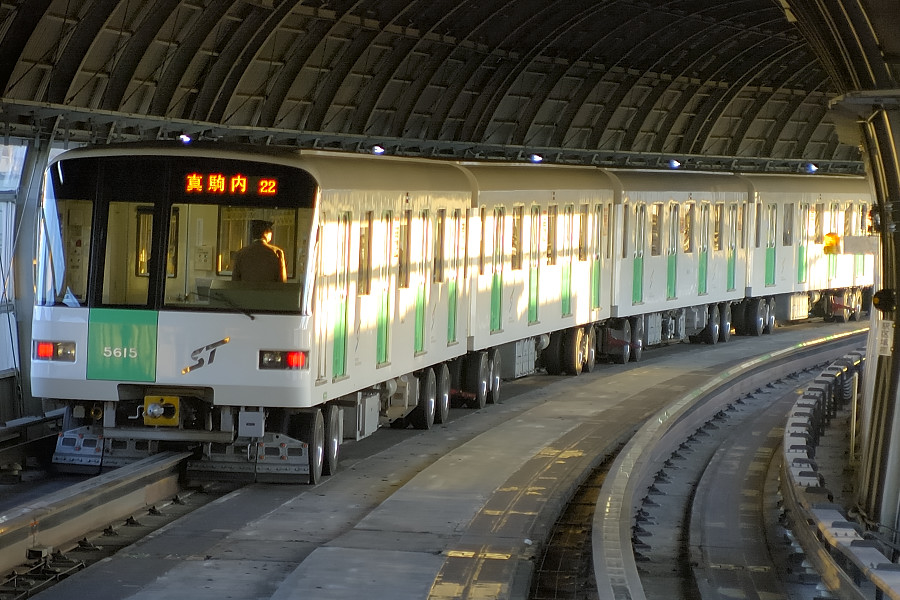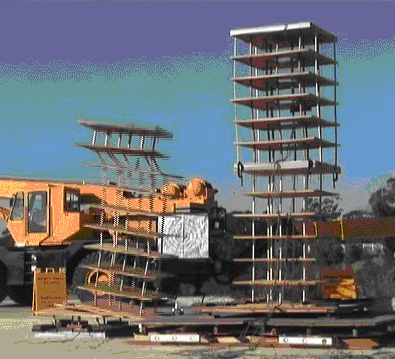|
Tünel Square
The Tünel ( en, Tunnel, designated as the F2 line on the Istanbul transport map) is a historic underground funicular line in Istanbul, Turkey. It has two stations, connecting Karaköy and Beyoğlu. The tunnel runs uphill from near the confluence of the Golden Horn with the Bosphorus and is about long. Inaugurated on 17 January, 1875, the Tünel is the second-oldest fully underground urban railway in the world, after the London Underground (1863) and oldest in continental Europe, pre-dating the Budapest Metro by 21 years. History In the second half of the 19th century the neighborhoods of Pera (modern day Beyoğlu) and Galata (modern day Karaköy) had become the financial and commercial heart of Constantinople (modern day Istanbul) and the Ottoman Empire. Many Ottoman and foreign companies, mostly banks and insurance companies, set up their headquarters in these two neighborhoods. Foreign embassies, hotels and commercial markets in Pera were located at the top of a steep hill ... [...More Info...] [...Related Items...] OR: [Wikipedia] [Google] [Baidu] |
Karaköy (Tünel)
Karaköy is a station on the historic Tünel funicular railway in Beyoğlu, Istanbul. Located on Tersane Avenue, just north of the Golden Horn, it is the southern and lower terminus of the railway. The station is located at the ground floor of the IETT General Headquarters Building. Overview Karaköy station is located at Tersane Avenue No:9 and is on the ground floor of the IETT General Headquarters Building. The entrance to the station is located on the southeast corner of the building, while the exit is located on the west side of the building. The station is at-grade at the base of Galata hill. The tunnel begins at the northern end of the platforms, as the track head straight into the hill and up to Beyoğlu. Like its counterpart station, Beyoğlu, the Spanish solution is used at Karaköy, as the east platform us for boarding passengers and the west platform is for exiting passengers. The station is integrated within the citywide smartcard system, Istanbulkart, and turnstil ... [...More Info...] [...Related Items...] OR: [Wikipedia] [Google] [Baidu] |
Funicular Railway
A funicular (, , ) is a type of cable railway system that connects points along a railway track laid on a steep slope. The system is characterized by two counterbalanced carriages (also called cars or trains) permanently attached to opposite ends of a haulage cable, which is looped over a pulley at the upper end of the track. The result of such a configuration is that the two carriages move synchronously: as one ascends, the other descends at an equal speed. This feature distinguishes funiculars from inclined elevators, which have a single car that is hauled uphill. The term ''funicular'' derives from the Latin word , the diminutive of , meaning 'rope'. Operation In a funicular, both cars are permanently connected to the opposite ends of the same cable, known as a ''haul rope''; this haul rope runs through a system of pulleys at the upper end of the line. If the railway track is not perfectly straight, the cable is guided along the track using sheaves – unpowered pulleys that ... [...More Info...] [...Related Items...] OR: [Wikipedia] [Google] [Baidu] |
Moresque
Moresque is an obsolete alternative term to "Moorish" in English, and in the arts has some specific meanings. By itself, the word is used to describe the stylized plant-based forms of tendrils and leaves found in ornament and decoration in the applied arts in Renaissance Europe that are derived from the arabesque patterns of Islamic ornament. Like their Islamic ancestors, they differ from the typical European plant scroll in being many-branched and spreading rather than forming a line in one direction. The use of half-leaves with their longest side running along the stem is typical for both. First found in 15th-century Italy, especially Venice, moresques continue in the Mannerist and Northern Mannerist styles of the 16th century. Figures Another, related, meaning was defined in 1611 by Randle Cotgrave's ''A Dictionarie of the French and English Tongues'' as: "a rude or anticke painting, or carving, wherin the feet and tayles of beasts, &c, are intermingled with, or made t ... [...More Info...] [...Related Items...] OR: [Wikipedia] [Google] [Baidu] |
Rubber-tyred Metro
A rubber-tyred metro or rubber-tired metro is a form of rapid transit system that uses a mix of road and rail technology. The vehicles have wheels with rubber tires that run on rolling pads inside guide bars for traction, as well as traditional railway steel wheels with deep flanges on steel tracks for guidance through conventional switches as well as guidance in case a tyre fails. Most rubber-tyred trains are purpose-built and designed for the system on which they operate. Guided buses are sometimes referred to as 'trams on tyres', and compared to rubber-tyred metros. History The first idea for rubber-tyred railway vehicles was the work of Scotsman Robert William Thomson, the original inventor of the pneumatic tyre. In his patent of 1846 he describes his 'Aerial Wheels' as being equally suitable for, "the ground or rail or track on which they run". The patent also included a drawing of such a railway, with the weight carried by pneumatic main wheels running on a flat board t ... [...More Info...] [...Related Items...] OR: [Wikipedia] [Google] [Baidu] |
Rolling Stock
The term rolling stock in the rail transport industry refers to railway vehicles, including both powered and unpowered vehicles: for example, locomotives, freight and passenger cars (or coaches), and non-revenue cars. Passenger vehicles can be un-powered, or self-propelled, single or multiple units. A connected series of railway vehicles is a train (this term applied to a locomotive is a common misnomer). In North America, Australia and other countries, the term consist ( ) is used to refer to the rolling stock in a train. In the United States, the term ''rolling stock'' has been expanded from the older broadly defined "trains" to include wheeled vehicles used by businesses on roadways. The word ''stock'' in the term is used in a sense of inventory. Rolling stock is considered to be a liquid asset, or close to it, since the value of the vehicle can be readily estimated and then shipped to the buyer without much cost or delay. The term contrasts with fixed stock (infrastru ... [...More Info...] [...Related Items...] OR: [Wikipedia] [Google] [Baidu] |
Passing Loop
A passing loop (UK usage) or passing siding (North America) (also called a crossing loop, crossing place, refuge loop or, colloquially, a hole) is a place on a single line railway or tramway, often located at or near a station, where trains or trams travelling in opposite directions can pass each other. Trains/trams going in the same direction can also overtake, provided that the signalling arrangement allows it. A passing loop is double-ended and connected to the main track at both ends, though a dead end siding known as a refuge siding, which is much less convenient, can be used. A similar arrangement is used on the gauntlet track of cable railways and funiculars, and in passing places on single-track roads. Ideally, the loop should be longer than all trains needing to cross at that point. Unless the loop is of sufficient length to be dynamic, the first train to arrive must stop or move very slowly, while the second to arrive may pass at speed. If one train is too long for ... [...More Info...] [...Related Items...] OR: [Wikipedia] [Google] [Baidu] |
Seismic Resistance
Earthquake engineering is an Interdisciplinarity, interdisciplinary branch of engineering that designs and analyzes structures, such as buildings and bridges, with earthquakes in mind. Its overall goal is to make such structures more resistant to earthquakes. An earthquake (or seismic) engineer aims to construct structures that will not be damaged in minor shaking and will avoid serious damage or collapse in a major earthquake. Earthquake engineering is the scientific field concerned with protecting society, the natural environment, and the man-made environment from earthquakes by limiting the seismic risk to Socioeconomics, socio-economically acceptable levels. Traditionally, it has been narrowly defined as the study of the behavior of structures and geo-structures subject to seismic loading; it is considered as a subset of structural engineering, geotechnical engineering, mechanical engineering, chemical engineering, applied physics, etc. However, the tremendous costs experienced ... [...More Info...] [...Related Items...] OR: [Wikipedia] [Google] [Baidu] |
IETT
] Public transport in Istanbul comprises a bus network, various rail systems, funiculars, and maritime services to serve the more than 18 million inhabitants of the city spread over an area of 5712 km2. History Public road transport in Istanbul dates back to 30 August 1869, when a contract to build a tram system in the capital of the Ottoman Empire was signed. With this agreement, Konstantin Krepano Efendi's "Société des Tramways de Constantinople" obtained the concession to operate public transportation for forty years. The inauguration of four lines of horse-driven trams was in 1871. In the first year, the horsecars transported 4.5 million people on the lines Azapkapı-Galata, Aksaray-Yedikule, Aksaray-Topkapı and Eminönü-Aksaray. More lines were added in the following years. 430 horses were used to draw the 45 carriages, including 15 summer-type and some double-deckers, on track. In 1912, the horse-drawn tram had to cease to operate for one year because th ... [...More Info...] [...Related Items...] OR: [Wikipedia] [Google] [Baidu] |
United Kingdom
The United Kingdom of Great Britain and Northern Ireland, commonly known as the United Kingdom (UK) or Britain, is a country in Europe, off the north-western coast of the continental mainland. It comprises England, Scotland, Wales and Northern Ireland. The United Kingdom includes the island of Great Britain, the north-eastern part of the island of Ireland, and many smaller islands within the British Isles. Northern Ireland shares a land border with the Republic of Ireland; otherwise, the United Kingdom is surrounded by the Atlantic Ocean, the North Sea, the English Channel, the Celtic Sea and the Irish Sea. The total area of the United Kingdom is , with an estimated 2020 population of more than 67 million people. The United Kingdom has evolved from a series of annexations, unions and separations of constituent countries over several hundred years. The Treaty of Union between the Kingdom of England (which included Wales, annexed in 1542) and the Kingdom of Scotland in 170 ... [...More Info...] [...Related Items...] OR: [Wikipedia] [Google] [Baidu] |
Abdülaziz
Abdulaziz ( ota, عبد العزيز, ʿAbdü'l-ʿAzîz; tr, Abdülaziz; 8 February 18304 June 1876) was the 32nd List of sultans of the Ottoman Empire, Sultan of the Ottoman Empire and reigned from 25 June 1861 to 30 May 1876, when he was 1876 Turkish coup d'état, overthrown in a government coup. He was a son of Sultan Mahmud II and succeeded his brother Abdulmejid I in 1861. Born at Eyüp Palace, Ottoman Constantinople, Constantinople (present-day Istanbul), on 8 February 1830, Abdulaziz received an Ottoman education but was nevertheless an ardent admirer of the material progress that was being achieved in the West. He was the first Ottoman Sultan who travelled to Western Europe, visiting a number of important European capitals including Paris, London, and Vienna in the summer of 1867. Apart from his passion for the Ottoman Navy, which had the world's third largest fleet in 1875 (after the British and French navies), the Sultan took an interest in documenting the Ottoman Em ... [...More Info...] [...Related Items...] OR: [Wikipedia] [Google] [Baidu] |






